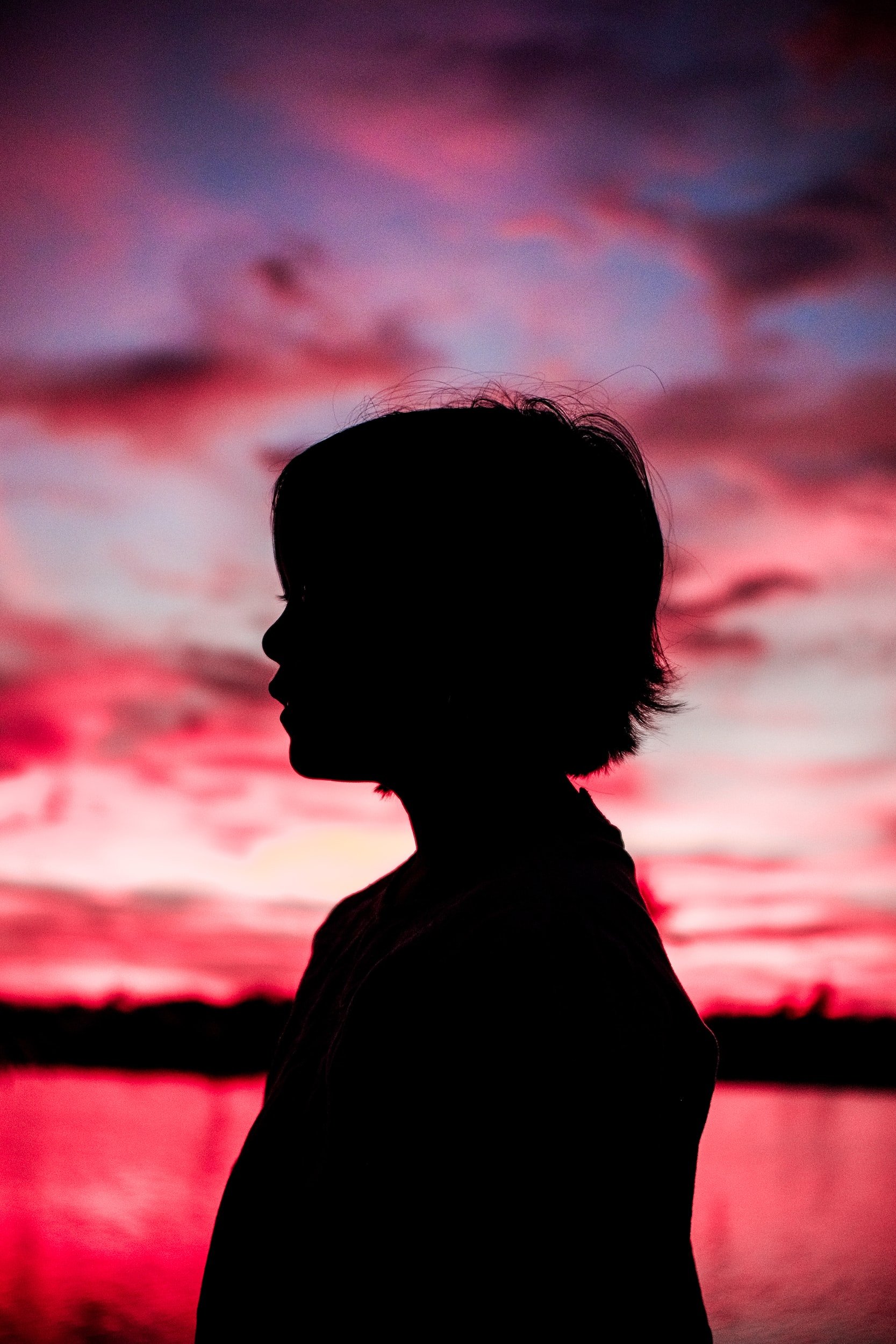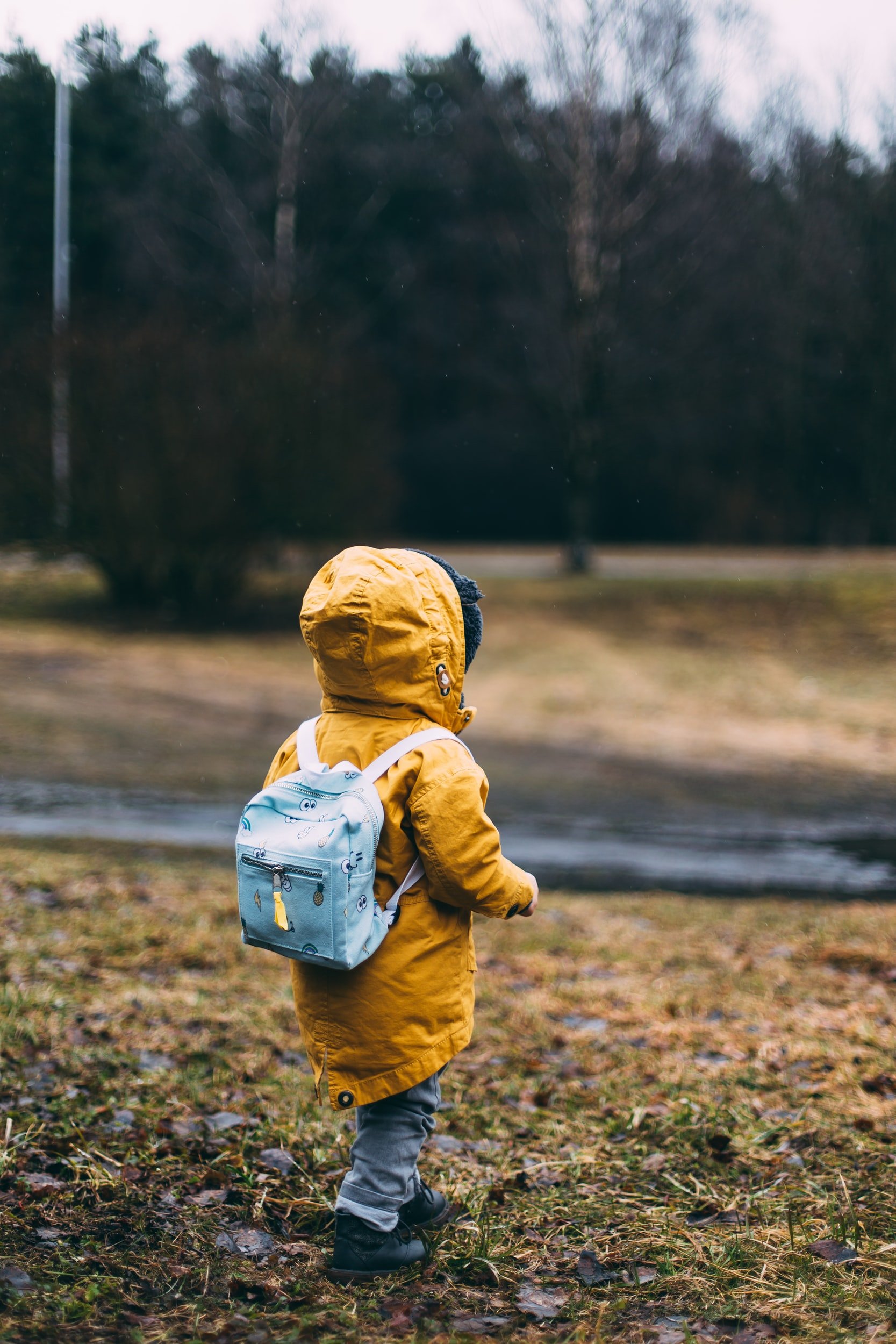This Is How to Talk to Your Child About School Shootings by Age (and Five Other Things About Keeping Kids Safe I Learned from a Security Expert)
June 15, 2022

There is no way to properly express the sadness it elicits to even have to write an article like this, but we promise real talk on big topics here on We Gotta Talk, and there is no bigger topic than our kids’ safety and lives.
This past week, I interviewed security and threat assessment expert Dave Benson on my podcast. I wanted to break down some of the important advice he gave on preventing and surviving school shootings.
For my parents out there squirming in your chairs even reading this, I feel you. It’s awful that we are here.
But I also believe it is better to address these things head on, in the interest of not only keeping our kids safe should the worst-case scenario happen, but also helping to prepare them and even our school administrations with the right information to possibly prevent them.
So let’s dig in. Here’s what I learned on keeping kids safe if there’s a school shooting.
Want to listen to this conversation? Click below:

1. Understand How Rare A School Shooting Is.
This is not to excuse the fact that there should be no school shootings at all. Nope. Please don’t mistake the desire to provide advice on this topic as a resignation that I believe this is how it should be. (Don’t even get me started on Congress’ lack of action on reasonable gun control.)
Here we are, though. In a world where, apparently, the right for a teenager to own an assault rifle outweighs your child’s right to exist. So let’s deal with the Right Now with fingers firmly crossed and hands in prayer that the need for this discussion will someday soon be a thing of the past.
Statistically, Dave says the odds of a school shooting happening are low.
“It’s what I call a low probability, very high impact event. Because when it happens, everything changes. And that’s why we have to be ready and respond in a comprehensive way.”
2. Talk to Your Kids About Their Classmates
There is no substitution for preparation. Chances are, your child already has gone through an active shooter drill at their school, even if they weren’t aware that’s what they were doing.
And as Dave and I discussed, it also doesn’t hurt to know your kids’ friends and fellow classmates. Keeping an eye to look out for negative interactions—like bullying—while volunteering or asking your child about the dynamics of their friend group can give you perspective into what other kids might be feeling.
And Dave says there are usually signs that a student could potentially be activated toward aggression later.
“99 times out of 100, someone changes from the way they normally are what we call ‘steady state behavior.’ And over time, all of a sudden, there’s this issue or a series of issues. And so we want to be able to monitor those and look at that.”
And the concept of checking in goes for your own child, too.
“Check on them. What’s on their phone, what are they doing online? Who are they associating with? Will they appreciate it? Absolutely not. But it’s essential now, because some of these kids that go on to this extreme behavior run right under the radar, because nobody’s checking on them.
3. Ask Your School Administration About Their Plan
Here are some specific questions to ask your school principal.
1) What is your emergency response plan?
“Everybody needs to have some planning and some type of exercising. What we don’t need to do is make them so realistic that you’re traumatized before you actually have an event.”
2) Do you drill and train children on what to do in active danger situations? If so, how?
Dave says, “That’s a very fair and appropriate question.” And note, your child will likely be given only the information they need based on their age level, and they may call what we’d refer to as an “active shooter drill” as a “safety drill” or exercise.
Don’t be scared to ask your principal and your teacher for specific details of what the drill involves, and supplement your child with more information as you see fit.
3) What is the teacher being told to do during an active shooter situation?
Remember, your child’s teacher also has important decisions to make in an active shooter or otherwise dangerous situation. Do they keep the kids in a group or separate them? Where in the classroom do they have them sit or lay? And at what point are they instructed to run, versus stay and shelter? These are all appropriate questions, Dave says, to have with your child’s teacher as well.

4. How to Talk to Your Kids About Staying Safe in School Shootings (by Age)
You wouldn’t say the same thing to an elementary student as you would a high school student, obviously. So here are some starting points for how to tell your child to protect him or herself should the worst-case scenario happen.
The first thing to realize, Dave says, is there is not just one way to stay safe. Sometimes staying in place—still and quiet—is best. Other times, he says kids might want to take the opportunity to exit the building in an active shooter situation if the chance presents itself.
Let’s dig into specifics by age.
How to Talk to Elementary and Middle School Kids About Staying Safe in a School Shooting:
Dave says it might be appropriate to lean into your kid’s familiarity with the drills they’ve already likely been doing. So it might go something like:
“Hey guys, you probably have gone through these exercises with your teachers. They’re in place because, if a bad guy comes in, we need to know what to do.” And then, Dave says, follow up by asking them what those procedures are (if they’re willing to talk about it), and gently reminding them that they should stay calm, above all.
But here’s where it gets tricky: I wanted a straight answer about the best thing to do in a school shooting, and Dave says it’s just not that simple.
He recalled a time meeting the grandmother of an elementary-aged school shooting survivor who got to safety by running out of the classroom when the shooter entered. She got away.
But Dave says that’s also not always the answer. The best advice I could pin down on this is for kids to balance both sticking to the plan—that safety plan their teacher has for them—but also following their instincts if it’s telling them something different.
Now, can elementary school kids easily tap into instinctive survival in a life and death situation? No one knows — or frankly wants to know. But I think the key lesson here is that Dave says there is no one way to survive that will always be right:
“If you have a classroom with a back door that’s open and you believe the threat is in the front, yeah, [run]. … I’d rather be safe. We don’t want people running willy nilly. But if we know where the threat is, and oh, by the way, if the threat is inside your classroom, we have to make some decisions. It’s an individual thing. … And what we don’t want to do is encourage people to huddle together and support and wait for the threat to come to them. That’s my concern.”
How to Talk to High School and College Kids About Staying Safe in a School Shooting:
“The older the children are, the better they understand [the threat].”
And that means that for kids who would know what is actually happening in these scenarios, there are options, depending on the location of the shooter relative to the kids.
Dave says, “If you can get away from the threat, there’s no substitute for that. … If you can’t, you’re going to hide. You’re going to barricade whether with your class, [but] try not to huddle together for moral support. We saw that in the Virginia Tech tragedy. That’s why so many people were shot were shot and killed.”
5. A Note to Teachers
Teachers, you are heroes. We see you, we love you, and you don’t make enough damn money to do what you do.
Let me be clear, before I share Dave’s advice to teachers, that I believe they should not have another burden to bear in the classroom. They are saints and angels who are underpaid for the magic they work daily, so I don’t want this to come across as a suggestion from Dave or me that they need to add “keeping kids alive” to their roster of daily responsibilities.
But the hard truth is, teachers are a very real source of protection and information in the case of a school shooting, because, well, they are there.
So when I asked Dave for his advice for the teachers who want to feel more prepared, here’s what he had to say:
“I think we now know if we didn’t know before, waiting for law enforcement in a school environment may not be the best route to go. So we have to come up with some of these other options. And I’m very unapologetic about this. There’s no one right or wrong answer. But we have to be flexible in our approach to these things.
If you have no other choice, you might have to make that awful decision to neutralize the threat, throw whatever you need to do fire extinguishers, whatever [you can].”
Again, while we don’t want to overwhelm individual teachers with specific questions on school safety, Dave says these questions are fair game to ask your principal or administration, so you can get more specifics on what your school’s action plan is.
6. Despite All the Pain and Worry, There is Hope
How badly do you hate that we even have to share this advice? Yeah, me too. So I was grateful to round out my conversation with Dave with a moment of hope.
“I can assure you, but there’s a message of hope here—working together, sharing information, realizing that some of the signs and symptoms can be caught and checked and sometimes even mitigated.
I don’t want to be a therapist, but I want them to know who they can report it to what to report why that’s important.
“Also … if you have to respond in an emergency situation, have a family plan … know where your exits are, understand where your limitations are. And if they see [the parents] doing it, the kids are going to do it the same way.
[We are] not going to do away with evil, but what it will do [is] empower us as a community and as a country to have a way to work through this.”
For even more information and perspective from Dave, listen below:
Thanks for getting through this tough but important topic with me. Big hugs to all the parents who worry their heads off every day but keep showing up in life anyway. Xo
© 2022 WGT Designed by leche studio
PRIVACY & TERMS
CONNECT
NAVIGATE
Home
Blog
Work With Me
More From Us
Want to be the first to get the latest updates and news?
About
Podcast
Contact